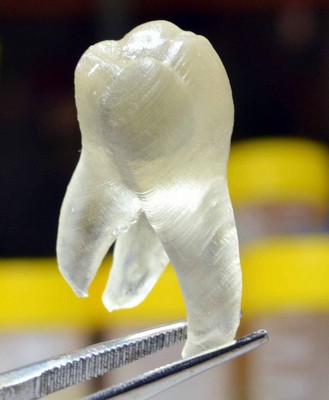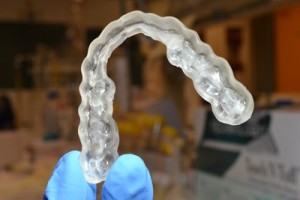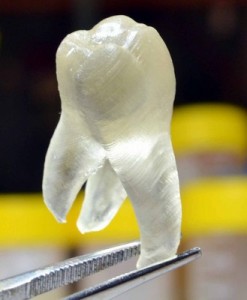Antimicrobial 3D Printed Teeth

A team of scientists has developed a 3D printing material that kills bacteria on contact. Material scientist Andreas Herrmann, from the University of Groningen, collaborated with orthodontist Yijin Ren from the Kolff Institute to print dental implants that eliminate microbes. The study was published in the journal Advanced Functional Materials.
3D printing is changing manufacturing processes in many industrial domains, research and medicine. These changes have arrived also to dentistry, producing crowns, bridges, models and orthodontic appliances. However, the possibility of incorporating new functionalities to the printed objects has not been properly explored. The authors of this study indirectly arrived to this integration. Ren asked Herrmann to develop an antimicrobial dental glue to combat the infections that arise when metal braces are attached to the teeth. Instead, Herrmann proposed to incorporate the antimicrobial agent in the 3D print.
Quaternary ammonium ions added to the teeth to kill bacteria
The material scientist added quaternary ammonium ions to the printing material. These ions are positively charged and interact with the negatively charged microbial membrane, perforating it and killing the microbe. In their first procedure, the researchers added the antimicrobials -with a polymerizable unit- to a mixture of two monomers that polymerize when irradiated with UV. These strategy failed to keep the antimicrobials in the mixture, which is very dangerous, as they could reach the intestines and kill gut microbes. Herrmann and his team tried other approach: first, they polymerized the antimicrobials into long chains, then added the chains to the 3D printing fluid. This technique worked, and the antimicrobial agent remained entangled with the printing material. All the printed components have been tried in humans, but more tests are needed before the commercialization of these orthodontics.
The use of antimicrobial orthodontic appliances could solve the most common problems in dentistry: mouth infections cost billions of dollars every year. In the future, the use of antimicrobial printing materials will have applications in other medical devices that suffer from biofilm formation.
Source: University of Groningen


